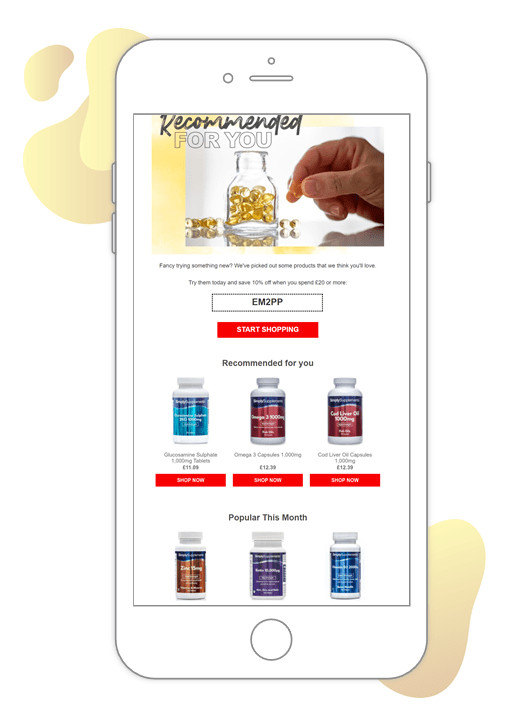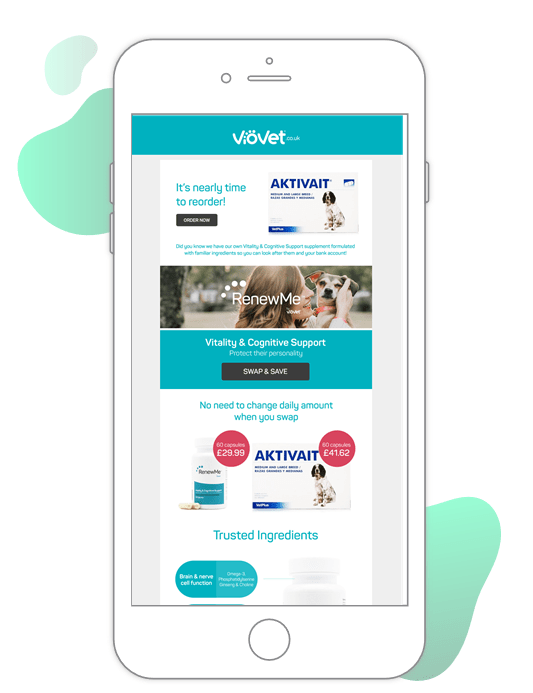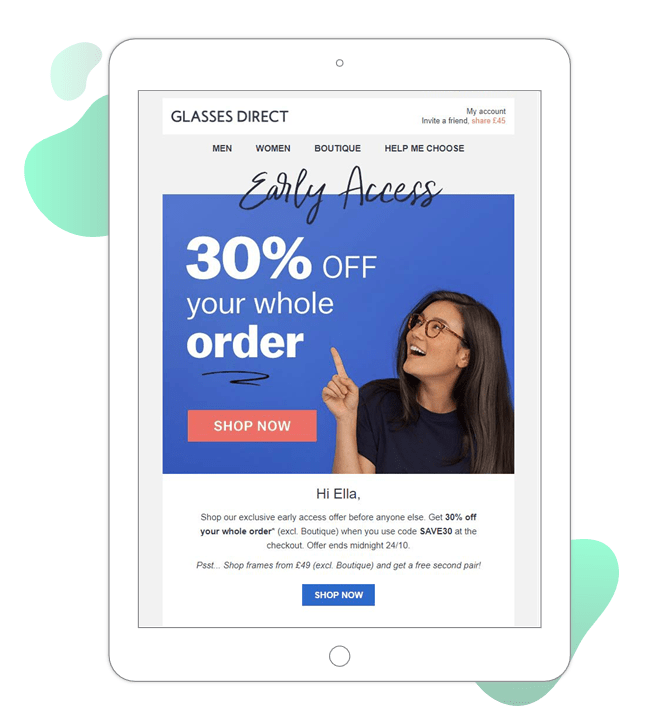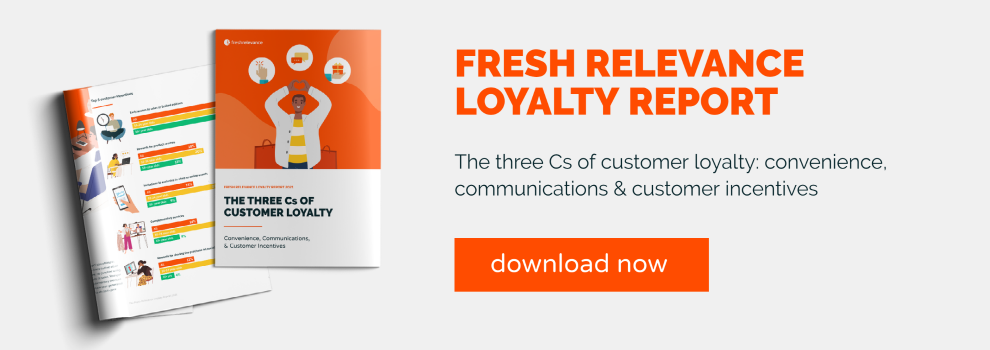Converting new customers is vital to the success of your eCommerce store. But what about that pool of existing customers, the people who have already taken the plunge and bought something from your site? If you don’t have a retention strategy in place, you’re sitting on an untapped gold mine that’s losing value each time a competitor woos your existing customers to their site with a better customer experience.
In this post, you’ll learn what customer retention is, how to calculate your customer retention rate, and 5 eCommerce tactics to encourage repeat purchases.
What is customer retention?
Customer retention in eCommerce refers to a store’s ability to keep their customers coming back to make repeat purchases over a given period of time.
How to calculate your customer retention rate
To calculate your customer retention rate (CRR), you’ll need to decide on a time period to measure. You’ll then need to know the following information:
- The number of customers you had at the start of the time period (S)
- The number of new customers you acquired during the time period (N)
- The number of customers you had at the end of the time period (E) i.e. taking into account the number of lapsed customers, new customers and repeat customers.
The calculation looks like this: CRR = ((E-N)/S) x 100
Let’s look at the calculation in action.
Imagine you started your chosen time period with 2000 customers. During that time period you gained 1000 new customers, lost 100 customers and 1500 of your existing customers made a repeat purchase.
Your customer retention calculation would look like this:
2400 – 1000 / 2000 x 100 = 70% customer retention rate
It’s important to note that the time period you choose will depend on your product or service. For example, a supplement store will be measuring their customer retention rate against a shorter time period than a furniture store, since supplements have a shorter product lifecycle than items of furniture.
Why is customer retention important?
Retaining your existing customers is cheaper than acquiring new ones. In fact, it can cost five times more to attract a new customer than it does to retain an existing one. And if that mind-boggling stat isn’t enough to persuade you, research shows that a 5% increase in customer retention correlates with at least a 25% increase in profit.
If that’s got you in the mood to rev the engine of your customer retention strategy, read on for 5 retention-boosting eCommerce tactics.
5 eCommerce tactics to boost customer retention
1) Personalized product recommendations
The beauty of existing customers is that you already have a wealth of past purchase and browse data. Make sure you put that data to good use by displaying personalized product recommendations at every touchpoint across your website and email marketing.
Almost 1 in 4 customers want retailers to make it easy for them to find products they like, as well as recommend products that complement their past purchases.
In this example, Rip Curl includes personalized product recommendations on their homepage to greet returning customers with products specifically recommended for them. Rip Curl gathers these recommendations by using the customer’s product purchase history and comparing it with other shoppers who’ve viewed those products, using machine learning to recommend the most likely eventual purchases.
Product recommendations have proven to be a lucrative tactic for Rip Curl, as the company has seen a 2% sales uplift with personalized recommendations across web and email.

1 in 3 consumers want to see products and offers featured in marketing emails based on items they purchased, so try using your post-purchase emails to share personalized product recommendations based on the customer’s purchase behavior.
Simply Supplements sends customers a post-purchase email with tailored product recommendations, as well as items that are popular with other customers.

2) Triggered emails
Triggered emails are a great way to ensure you reach customers at the moment they are most engaged with timely, relevant information. Cart abandonment emails are probably the most well known type of triggered email, but in this post we’re going to look at replenishment emails.
For frequently purchased consumer goods, you can give customers a timely reminder to repeat the purchase they recently made. The timing of your replenishment emails should correlate with your product lifecycle to ensure you’re reaching customers just as they’re about to run out of the product.
1 in 4 consumers aged 16-24 want retailers to send them replenishment emails, so make sure this type of triggered email is included in your retention repertoire.
Viovet sends replenishment emails to customers of particular products, reminding them that the time to reorder is approaching.

3) ‘Welcome back’ popover
You’re probably already using popovers to encourage newsletter sign ups and offer discounts to new visitors. But if you’re not displaying tailored popovers to your returning customers, you’re missing a trick.
Cottages.com uses a popover to remind returning visitors of their last viewed product, including an image of the product to help jog their memory. Customers are able to pick up right where they left off, speeding up the purchase process and fostering loyalty.
Almost 1 in 4 customers want retailers to make it easy for them to return to an abandoned session. ‘Welcome back’ popovers are an effective way to do this.

4) Dynamic content
Dynamic content lets you automatically generate compelling creative that is unique, relevant and up-to-date. And with all that past purchase and browse data you’ve gathered, you’ll be able to personalize the entire experience for returning customers.
Your navigation bar is a good spot for dynamic content, since it’s often the first touchpoint for visitors to your site.
Zee & Co puts the spotlight on specific brands across their navigation bars. Since customers tend to prefer brands or products they have seen multiple times, harness the power of familiarity for returning visitors by tailoring the brand suggestion to the customer’s most browsed or purchased brand.

Another prime place to put dynamic content is in your hero banners.
FFX personalizes the hero banners of their abandonment emails based on the shopper’s brand affinity, displaying product imagery based on the brand of the carted or browsed item. Power tool buyers tend to be loyal to certain brands due to compatibility requirements, making this a lucrative tactic for FFX. In fact, the company’s personalized cart and browse abandonment emails achieve an impressive click to open rate of 45%.

5) Offer early access to sales
Like all good relationships, retaining your customers is a two-way street and they expect something in return for their loyalty.
Our research shows that when it comes to incentives, almost 1 in 3 loyal customers want retailers to offer them early access to sales or limited editions. Consider using segmentation to send your repeat customers exclusive offers and advance notifications of sales.
Glasses Direct treats their loyal customers to an exclusive early access 30% discount sale, encouraging repeat purchases by helping them be the first to bag the products they want for the best prices.

Download the Fresh Relevance Loyalty Report now to gain insights into what consumers want and don’t want from the eCommerce customer experience, how they want to hear from brands, and the incentives they expect in return for their loyalty.







